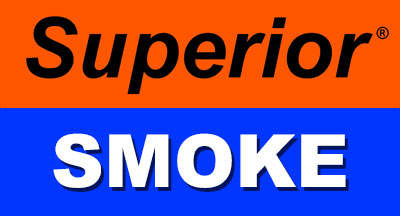Biofilter Airflow Testing
Biofiltration is a technology widely used in the wastewater treatment, manufacturing, and coating application industries as an effective neutralizer of odorous and polluted air or “off-gas”. Typically, odorous off-gas, such as that produced by a wastewater treatment facility, is blown underneath a bed of “media” containing an appropriate biological material. As the air passes through the media, the biological material reacts with and degrades the pollutants in the off-gas to produce clean air. The clean air is then released into the atmosphere as it rises from the filter media. The concept of blowing off-gas through a biofilter to remove pollutants is simple, however the biofilter itself requires testing and regular maintenance to achieve optimum performance across it’s life cycle. One of the most important elements of biofilter performance is the distribution and consistency of the off-gas as it passes through the filter media.
Why is airflow so important?
It is essential for biofilters to maintain a certain level of moisture to preserve the biological filter material within it. Having a moisture level outside of the desired range can greatly reduce or eliminate the biological material’s ability to neutralize pollutants. Of course, the airflow characteristics of the off-gas as it is blown through the biofilter has a direct impact on moisture level. Typically, in an effort to maintain optimum moisture level, the flow rate and moisture rate of the off-gas is controlled and optimized before it reaches the media. While this is essential, it is only part of the equation. Less easily controlled, yet equally important, is the distribution of the off-gas as it is pushed through the filter. Ideally, an even and consistent airflow throughout the biofilter will yield the best results. Off-gas will be exposed to the entire content of the biofilter, both maximizing the filter’s efficiency and maintaining an even moisture level throughout the media. On the other hand, when airflow is inconsistent and flowing at a higher rate in a concentrated area of the biofilter, there is a risk of drying out the media in that area and severely reducing efficiency.
What causes uneven airflow?
As biofilters age, their performance and airflow characteristics change. Typically, media is suspended on a sturdy elevated sub structure which is perforated with slits or holes. These holes are small enough to support the larger filter media resting on top of it, but large enough to allow off-gas to pass up from underneath the structure and into the media. Over time, media material breaks down into smaller pieces and begins to fall and clog these openings. As the problem worsens, airflow becomes restricted and air distribution less consistent. The result is increased airflow in concentrated areas, dried out media, and less efficiency. Poor airflow can also be caused by a breakdown of the substructure itself. The air and media in a biofilter can often be or become acidic and slowly break down the structure. As integrity declines, it is not uncommon to have failures or collapses which can seriously restrict airflow.
Uneven airflow is not only caused by aging. In fact, one of the most important times to test for even airflow is after the initial install of the biofilter and after any replacement or adjustment of the media. The bed thickness, particle size, and compaction level of the biofilter media all play an important role in airflow. Just because the filter media looks level does not mean all of these factors are perfectly consistent throughout the filter. Testing must be done and adjustments may be required to achieve maximum efficiency.
How to test biofilter airflow
![]() The easiest way to test for even airflow in a biofilter is to perform a smoke test. A smoke test is a simple and inexpensive way to visually confirm that air is moving evenly and consistently throughout the media. The process is simple:
The easiest way to test for even airflow in a biofilter is to perform a smoke test. A smoke test is a simple and inexpensive way to visually confirm that air is moving evenly and consistently throughout the media. The process is simple:
First, an appropriate smoke must be introduced to the airflow before it passes through the filter. The best product for this application is a Superior® Smoke Candle. Superior® Smoke Candles are used in countless leak detection and airflow study applications and are ideally suited to smoke test biofilters. Smoke Candles are non-toxic and non-explosive, however they should not be used near any combustible off-gas.
Start by selecting an appropriately sized Smoke Candle. Larger biofilters may require one or more large 3C or W3C Smoke Candles which have a 3 minute duration and 40,000 CFM output. Smaller biofilters may only require a 1A (30 second) or 2B (60 second) Smoke Candle.
Introduce the Smoke Candle to the off-gas airflow at a convenient access point well in advance of the filter media. Smoke Candles can get hot to the touch so it is recommended they be placed in a metal bucket, tray, or other suitable surface.
Light the Smoke Candle and initiate the airflow. The smoke will follow the path of the air as it passes through the media. Perform a visual inspection of the media. The smoke will provide a perfect visual of how air is moving through the filter. Make note of any spots across the filter surface that show disproportionate smoke movement. Little to no smoke is an indication of clogging, structural failure, excessive compaction or excessive bed thickness and should be addressed. Areas with notably high smoke movement indicate concentrated airflow and are at risk of drying out.
→ Superior® Smoke Candles
→ Smoke Candle Information

